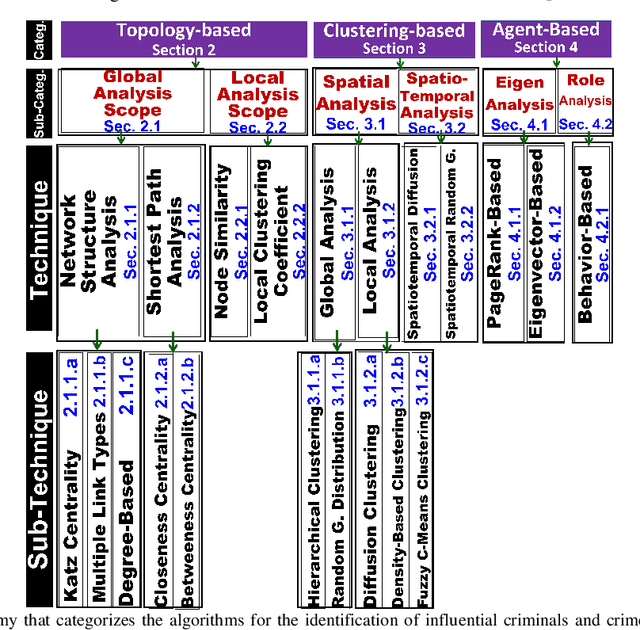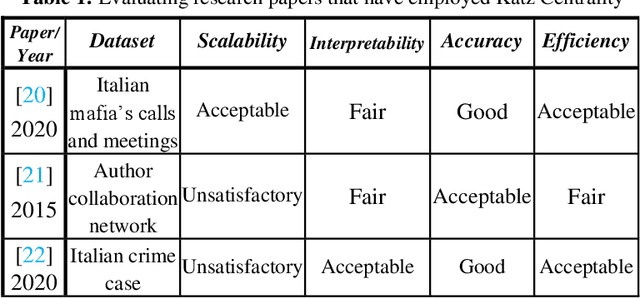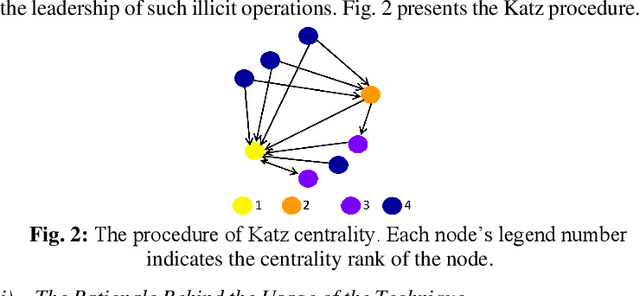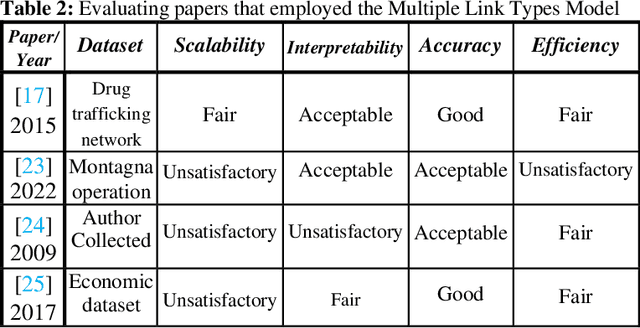Abdulhadi Shoufan
Techniques to Detect Crime Leaders within a Criminal Network: A Survey, Experimental, and Comparative Evaluations
Jan 26, 2024



Abstract:This survey paper offers a thorough analysis of techniques and algorithms used in the identification of crime leaders within criminal networks. For each technique, the paper examines its effectiveness, limitations, potential for improvement, and future prospects. The main challenge faced by existing survey papers focusing on algorithms for identifying crime leaders and predicting crimes is effectively categorizing these algorithms. To address this limitation, this paper proposes a new methodological taxonomy that hierarchically classifies algorithms into more detailed categories and specific techniques. The paper includes empirical and experimental evaluations to rank the different techniques. The combination of the methodological taxonomy, empirical evaluations, and experimental comparisons allows for a nuanced and comprehensive understanding of the techniques and algorithms for identifying crime leaders, assisting researchers in making informed decisions. Moreover, the paper offers valuable insights into the future prospects of techniques for identifying crime leaders, emphasizing potential advancements and opportunities for further research. Here's an overview of our empirical analysis findings and experimental insights, along with the solution we've devised: (1) PageRank and Eigenvector centrality are reliable for mapping network connections, (2) Katz Centrality can effectively identify influential criminals through indirect links, stressing their significance in criminal networks, (3) current models fail to account for the specific impacts of criminal influence levels, the importance of socio-economic context, and the dynamic nature of criminal networks and hierarchies, and (4) we propose enhancements, such as incorporating temporal dynamics and sentiment analysis to reflect the fluidity of criminal activities and relationships, which could improve the detection of key criminals .
How to Design and Deliver Courses for Higher Education in the AI Era: Insights from Exam Data Analysis
Jul 22, 2023Abstract:In this position paper, we advocate for the idea that courses and exams in the AI era have to be designed based on two factors: (1) the strengths and limitations of AI, and (2) the pedagogical educational objectives. Based on insights from the Delors report on education [1], we first address the role of education and recall the main objectives that educational institutes must strive to achieve independently of any technology. We then explore the strengths and limitations of AI, based on current advances in AI. We explain how courses and exams can be designed based on these strengths and limitations of AI, providing different examples in the IT, English, and Art domains. We show how we adopted a pedagogical approach that is inspired from the Socratic teaching method from January 2023 to May 2023. Then, we present the data analysis results of seven ChatGPT-authorized exams conducted between December 2022 and March 2023. Our exam data results show that there is no correlation between students' grades and whether or not they use ChatGPT to answer their exam questions. Finally, we present a new exam system that allows us to apply our pedagogical approach in the AI era.
 Add to Chrome
Add to Chrome Add to Firefox
Add to Firefox Add to Edge
Add to Edge